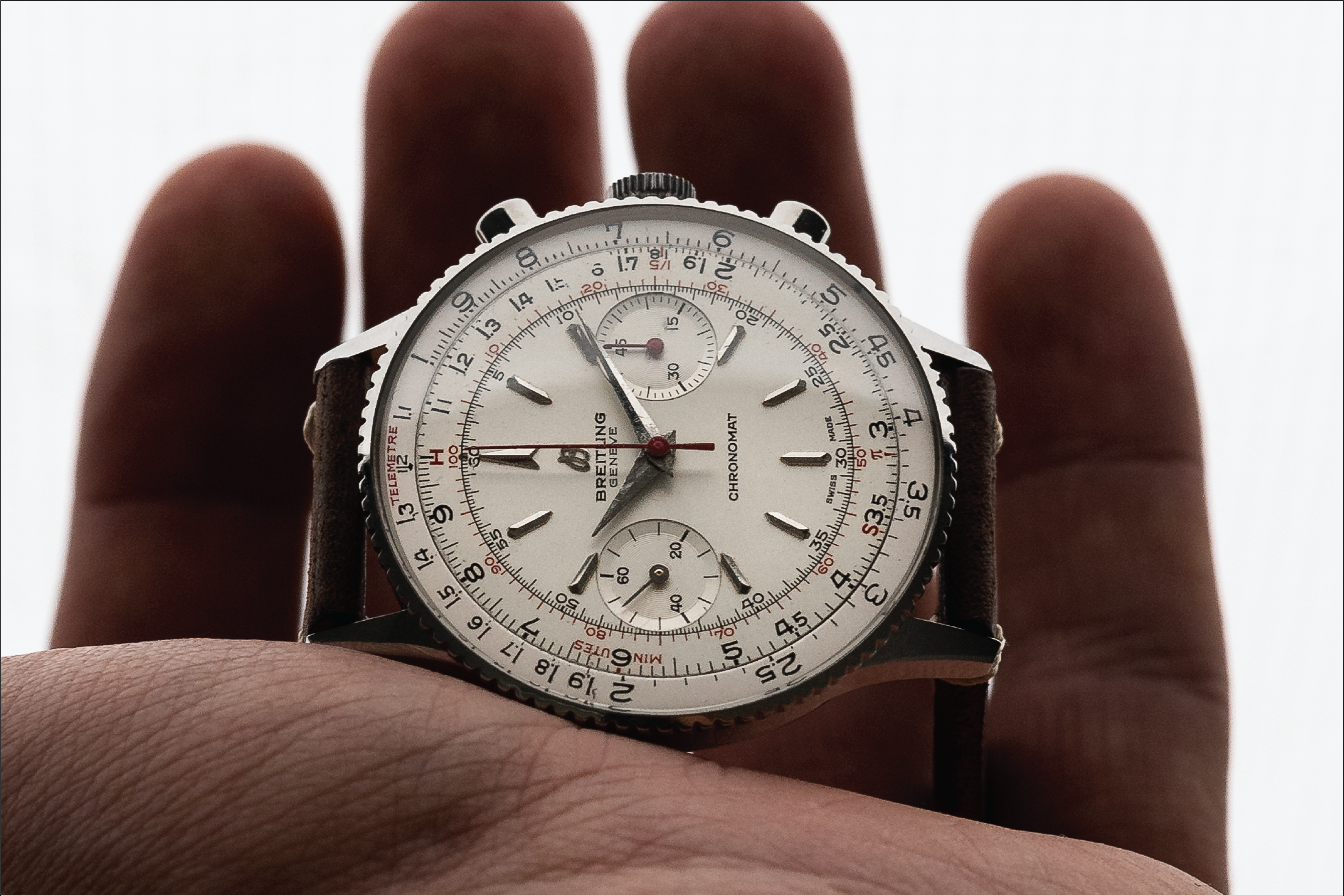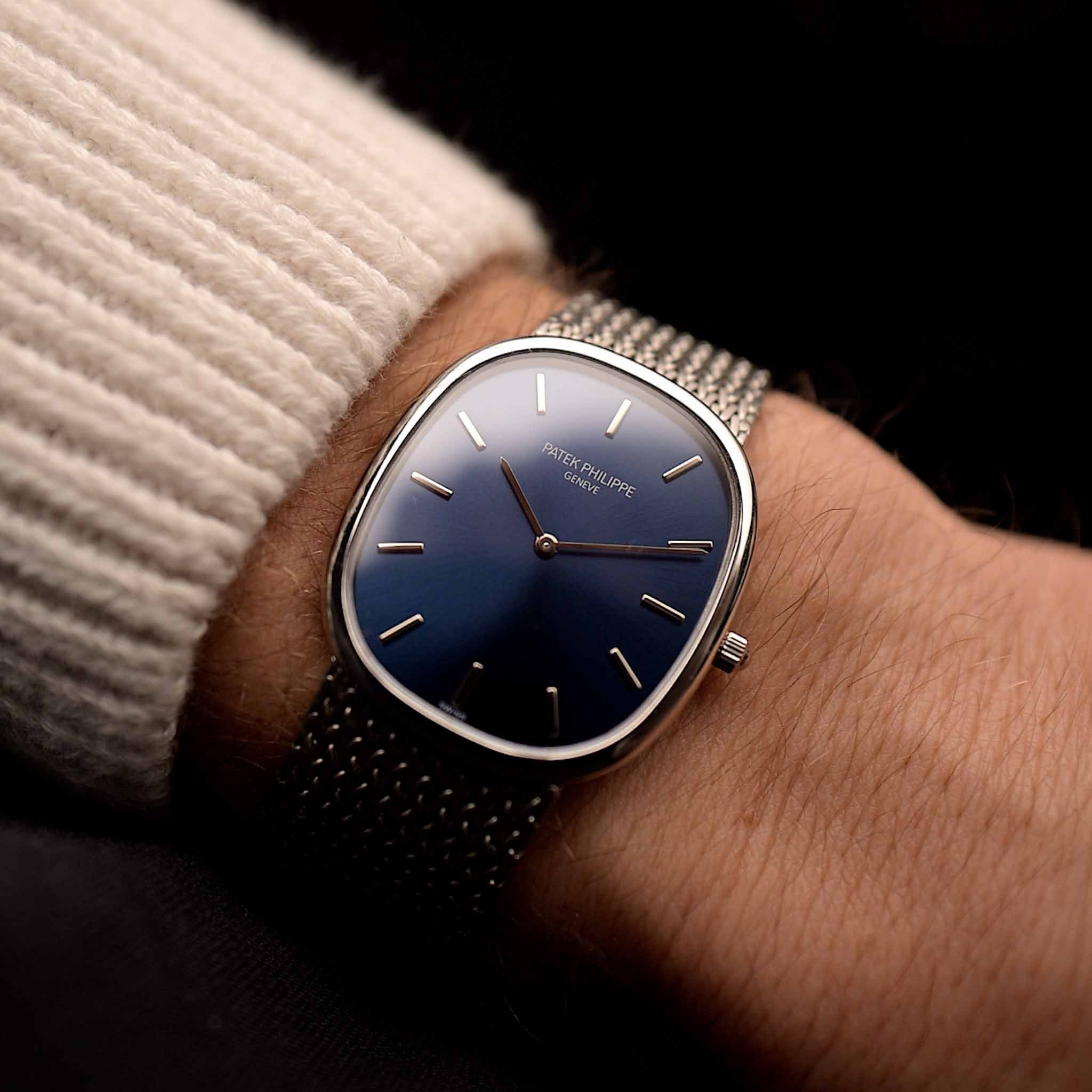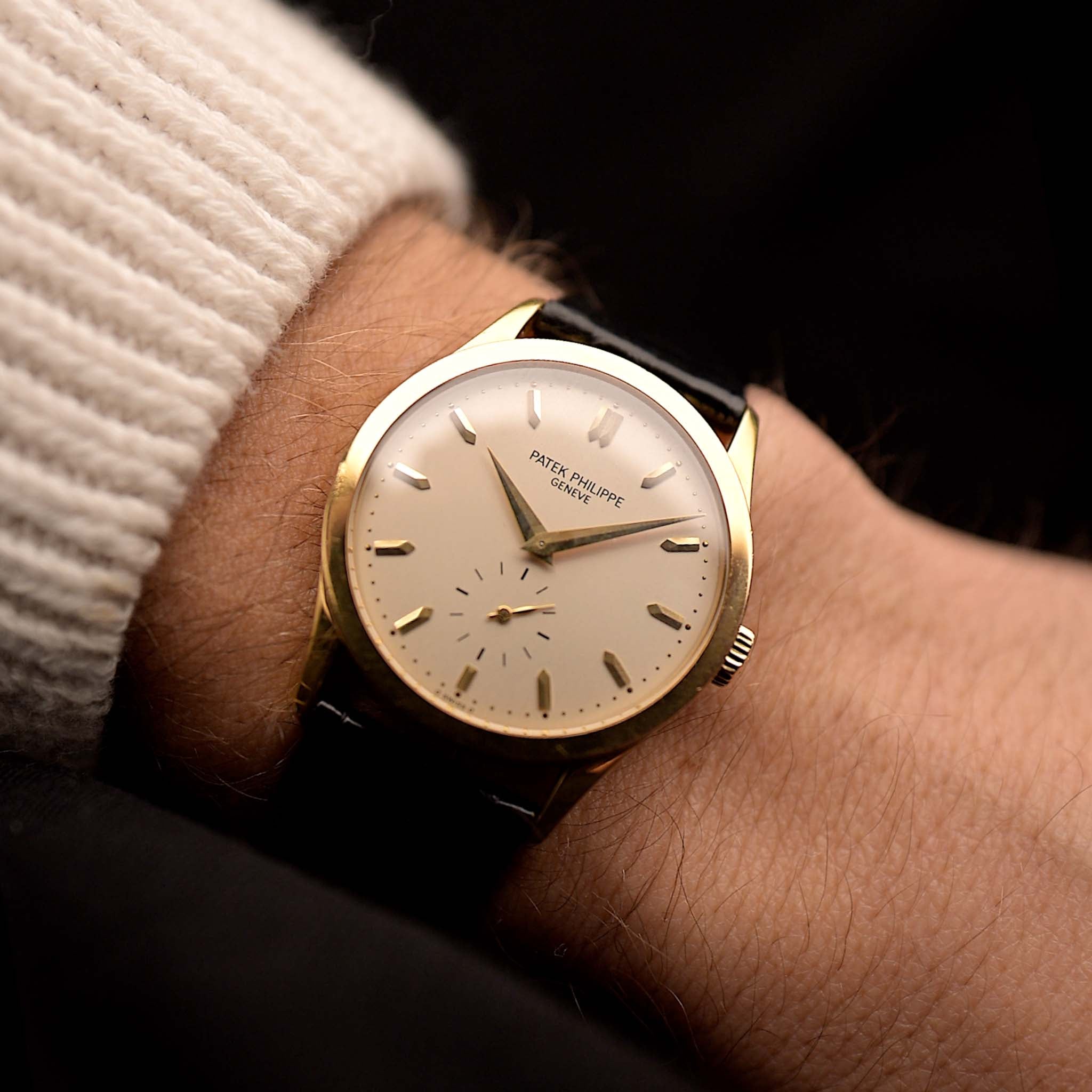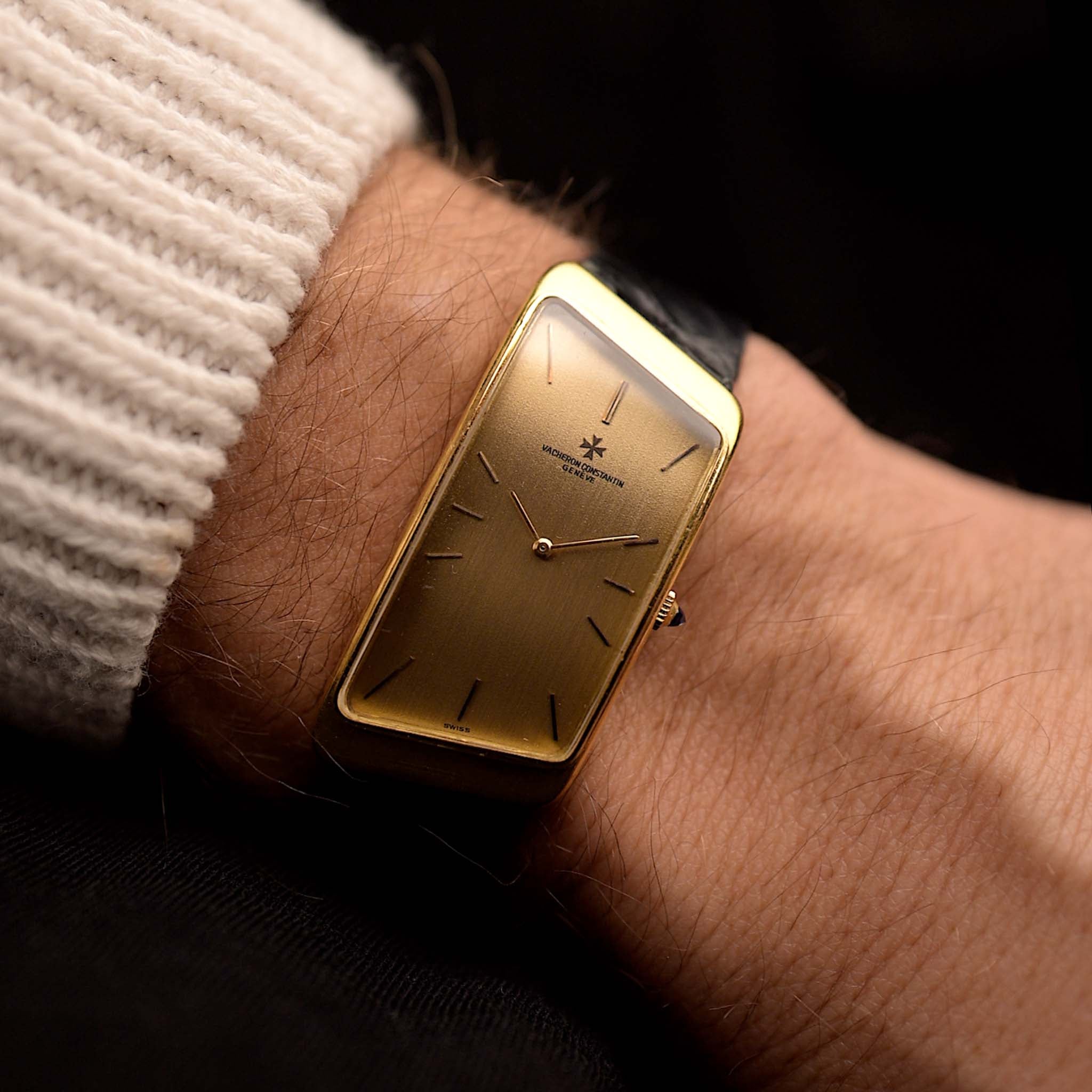Some endings become new beginnings. Breitling haltet its production in 1979 and Ernest Schneider bought the quartz-riddled watch manufacturer. So how did he plan to make the company viable again? His vision and a quick turnaround of the brand came in 1984: For Breitling’s 100th anniversary he introduced the Chronomat. A watch one year earlier (1983) designed for the Italian acrobatic flying squad “Frecce Tricolore” and building on the overarching theme of aeronautic precision instruments that made Breitling famous all through its history.
February 01, 2022
Breitling Chronomat - The Watch To Save The Company
 Marcus Siems @siemswatches
Marcus Siems @siemswatches
Collector, Author, Data Analyst
The Breitling line-up has always been all but boring[1]. Going back through time there we'll see a lot of household names. And our first stop is the Neo-Vintage classic from this Swiss chronograph power-house - the Chronomat.
But before we begin, one thing to keep in mind is that most of what we see in the collections of the late 20th century is for one reason or another a result of Christmas Day 1969 - to most known as the beginning of the quartz revolution[2-4]. A small quartz crystal, able to power your watch in combination with transistor technology to convert this energy into moving hands took over the market.
 The original Chronomat design as envisioned in 1942, a white dialed chronograph with slide-rule bezel. Photo @goldammer.me
The original Chronomat design as envisioned in 1942, a white dialed chronograph with slide-rule bezel. Photo @goldammer.me
The immediate effect was the quartz crisis that affected many Swiss watch manufacturers all throughout the 1970s and 1980s.
Quartz watches were cheap and accurate alternatives to the mechanical wonders from Switzerland. And this - mainly - Japanese and American powered electronic revolution wreaked havoc among Swiss watch manufacturers: in the late 1980s employment had fallen to about one third and production volume to less than half of what is was in the pre-Quartz era[5]. And Breitling has been no stranger to these dire trends.
 Figure 4. Distribution of Breitling market share (blue line) plotted against the expected market share (gray dashed line) based on watch distributions and overall market behavior (left)[6]. The red area indicates an under-performance starting in the late 60s and lasting until the mid-80s. The arrows mark the acquisition of the trademarks by the Schneider family and the introduction of the Chronomat. On the right is an ad for the Breitling Chronomat, launched in 1984 (Courtesy Breitling SA).
Figure 4. Distribution of Breitling market share (blue line) plotted against the expected market share (gray dashed line) based on watch distributions and overall market behavior (left)[6]. The red area indicates an under-performance starting in the late 60s and lasting until the mid-80s. The arrows mark the acquisition of the trademarks by the Schneider family and the introduction of the Chronomat. On the right is an ad for the Breitling Chronomat, launched in 1984 (Courtesy Breitling SA).
All throughout the 1970s Breitling was loosing market share and even more so than one would expect from a chronograph dominated brand (red area). This trajectory led to the point when Breitling was no longer viable.
In 1979 Willie Breitling, heir to the family business and lifelong head of the company, had to halt the production completely and sold the key trademarks of the brand to Ernest Schneider[2,7-8].
Schneider was quick in his turnaround of the brand and in 1984, Breitling’s 100th anniversary, introduced the Chronomat. It was a watch originally designed for the Italian acrobatic flying squad “Frecce Tricolore” in 1983 and building on the overarching theme of aeronautic precision instruments that made Breitling famous all through its history[9-11].
 Original sketch of the initial rider tab design. Courtesy of Breitling SA.
Original sketch of the initial rider tab design. Courtesy of Breitling SA.
The Chronomat... the name inherited from the original 1940s Breitling chronograph pieces with slide rule bezels. The watch itself, a modern interpretation of the aeronautic heritage of the brand it represents.
Ernest Schneider, an amateur pilot himself, wanted this new watch to be the perfect fit for the cockpit. A legible and analogue dial, a sturdy movement, comfortable wrist presence and something that would make this reference an instantaneous classic: The rider bezel[2,9]. The rider tabs mark the quarter hours on the bezel but have the additional advantage to recess the crystal below the bezel line and protect it from damage.
A concise design framework but does this also cluster together and dissociate from other collections of the brand?
 Figure 5. Distribution of Breitling vintage watches from 1940-2000 (734 total watches) grouped by design, highlighting the Chronomat series (150 watches). The dots are color-coded by every watches’ age.
Figure 5. Distribution of Breitling vintage watches from 1940-2000 (734 total watches) grouped by design, highlighting the Chronomat series (150 watches). The dots are color-coded by every watches’ age.
Diver-style bezel, rider tabs, often daring dial and subsidiary colors ... what a distinct design. The Chronomat is a modern, automatic chronograph classic. In our analysis all post 1983 Chronomat watches fall into the cluster in the lower right, and less than 5% of pieces within that cluster are named differently (Navitimer).
Interestingly, the variety of Chronomat pieces makes this by far the largest cluster in our analysis. Overall, 150 watches with a particularly broad range of dial options; we can see pieces ranging from Roman numerals with black dials to mother-of-pearl dials with stick markers. The essence of a pilot’s watch might still be there but the collection evolved into a popular and versatile bestseller.
 So late already? Time to see what other classics Breitling can offer. Photo @goldammer.me
So late already? Time to see what other classics Breitling can offer. Photo @goldammer.me
The Chronomat, has been a tremendous success-story as you can clearly see from the market share in the 1990s. For watches from around 1995 more than 7% listed on the market are Breitling chronographs … more than expected, and also more than ever before that infamous Christmas Day in 1969.
Breitling has climbed beyond its old glory. Who would have guessed that an acrobatic flight unit’s celebratory chronograph could save a century old Swiss powerhouse? The modern Chronomat clearly re-defined the brands image and put it back into the competition among the best. But to truly understand Breitling’s heritage we have to still dig deeper, go further back.
If we want to understand what heritage means we need to know what came before the quartz crisis: During the “Top Time” of chronograph watches.
References
[1] Vintage Breitling Chronographs - how they influenced the chronograph of today; Felix Goldammer, Goldammer Vintage Watches;
https://www.youtube.com/watch?v=cIWWhxaujCk
[2] Breitling Watch Brand Review & History: Certified Chronographs With Sky-High Precision; Paul Anthony, BespokeUnit;
https://bespokeunit.com/watches/breitling/#chronograph
[3] Our Heritage: History of the only manufacturer with every watchmaking expertise; Seiko;
https://www.seikowatches.com/global-en/special/heritage/
[4] The History of Quartz Weekend: Part 1 – The Seiko Revolution; Pierre-Yves Donze, Watchonista;
https://www.watchonista.com/articles/history/history-quartz-weekend-part-1-seiko-revolution
[5] Four Revolutions – Part 1: A Concise History Of The Quartz Revolution; Joe Thompson, Hodinkee;
https://www.hodinkee.com/articles/four-revolutions-quartz-revolution
[6] Watches from Chrono24, extracted 2020 Nov. 29th; Karlsruhe, Germany;
[7] Since 1884: The Breitling Story; Breitling
https://www.breitling.com/us-en/about/since1884/history/
[8] The history of Breitling – the brand that conquered air, land and sea; Russell Sheldrake, The Gentleman’s Journal;
https://www.thegentlemansjournal.com/article/history-of-breitling/
[9] The All-Purpose Icon – Technical Inspiration, Stylish Execution; Breitling;
https://www.breitling.com/us-en/heritage/chronomat/
[10] Breitling Chronomat – a short history, part 2: the Pilot’s Chronomats; altro, WatchUSeek Forum;
[11] The Breitling Chronomat; DonIndiano;
http://www.donindiano.net/watches/breitling/chronomat/
All rights on text and graphics reserved to the Author.




























Leave a comment